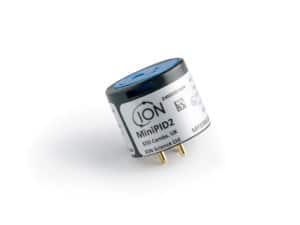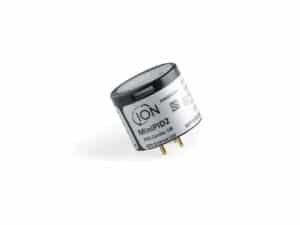Industry Guides
ION Science has a wealth of knowledge of gas detection technologies across many diverse industries and applications. The information has been collated into useful industry guides for you to download.
Home » Gas and Leak Detectors » Resource Center » Industry Guides
ION Science has a wealth of knowledge of gas detection technologies across many diverse industries and applications. The information has been collated into useful industry guides for you to download.
A HAZMAT spill response team need to identify the unknown dangers quickly at any scene, hence why the power of PID in the event of a cleanup is critical.
Transportation of hazardous materials can be transported in many different ways over very long and equally short distances, carrying many risk factors.
Reducing VOCs within IVF laboratories is crucial to keep standards of quality and safety within the laboratory to the highest possible level.
Monitoring toxic gases within a laboratory environment is crucial, expecially when dealing with IVF as exposing them to VOCs can impact their development.
The HAZMAT emergency response guide explains the great benefits of PID instruments in a response situation because they provide an immediate response.
A humid environment requires a vital component to monitor VOCs, so in this guide, we provide information on the best PIDs to tackle humid applications.
Humidity Interference in VOC measurements used to be a limitation to the use of PIDs in the past, until now. New designs provide almost no humidity effects.
Detecting Volatile Organic Compounds is crucial while there is a high rise in the use of sanitizers and disinfectants within our healthcare facilities.
Humidity Effects On PID Instruments can have a major effect on older models, but due to recent technology a solution has been identified and adapted.
Hazardous VOC gases found within hospitals can accumulate and, if left unattended, can result in building-related illnesses or Sick Building Syndrome.
Detecting arson accelerants early is vital, as it helps investigators save time and determine if the cause of the fire was accidental or deliberate.
Measurement Instrumentation, the benefits and comparison of trained sniffer dogs and photoionisation detectors for the use within fire/arson investigations.
Identifying the hazards of gas leaks early improves the facility itself, it’s processes, and the safety of the people who work within this environment.
Leak detection within analytical laboratory equipment promotes good laboratory practice, and preventative maintenance offers a number of benefits.
Monitoring aromatic gases early is crucial to limit the effects on worker’s health. This all depends upon how much they are exposed to and for how long.
Soil remediation, which is the reduction of contaminant concentrations within the soil and to reduce contaminants so that they are suitable for use,
VOCs in soil remediation can be easily identified with the use of PIDs. They are simple to use and provide quick, accurate results.
Gas leak equipment reduces the likelihood of leaks and the best way to reduce fugitive emissions is through regular leak testing and maintenance.
Gas Detection System, the main differences and benefits of using photoionisation detection and flame detection when monitoring fugitive emissions.
Aromatic gases contain at least one aromatic ring of which benzene is the simplest form. Benzene itself forms the well know group of compounds (BTEX).
Subsurface Monitoring is critical and should be considered before any development on top of any soil, As if left uncontrolled can lead to serious effects.
Gas detection for safety is pivotal, so Ion science cuts no corners when it comes to our gas detectors. Explore our variety of gas detectors today!
The Gas detection Instrument guide will help you understand the requirement for each type of instrument and which will be best suited to your industry.
COVID-19 lockdown events have reduced the population-weighted concentration of nitrogen dioxide and particulate matter levels in many countries.
Ground gas monitoring - contaminated ground such as from landfill sites, infilled ground and spilled or leaked petroleum hydrocarbons.
Benzene Detection (Fixed Instruments) - ION Science's Fixed Photoionization Detectors protect workers and the public from benzene exposure.
Hazardous air pollutants are those known to cause cancer and other serious health impacts. This is why fenceline monitoring is important!
Understanding occupational exposure to toxic chemicals on a daily basis is important when working within the Oil & Gas industry.
The following guide explains the Tiger XTs humidity resistant design and how it can become an important tool for your sample screening.
The following guide will explain the reasons behind the popularity of PID, despite the challenges presented by field work.
ION Science Inc.
4153 Bluebonnet Dr.
Stafford, Texas 77477
Tel: +1 (877) 864-7710
info@ionscienceusa.com

© 2025 Ion Science USA. Ion Science is registered trademark on Ion Science Ltd
Fill out the form below and our team will get back to you shortly.
Diffusion Fixed Gas Detection Device
A diffusion gas detection device works, as the name suggests, on the diffusion principle. The sensor is exposed to the ambient air and will measure the gas by means of the diffusion principle. Diffusion means proportional spread of molecules over the available space (from high concentration to low concentration). This also means that a diffusion gas detection device is only able to measure the concentration of gases at the location where the device is located. Since there is no forced flow of the gas to be measured, this device is not suitable for taking measurements remotely, but they do accurately identify what’s present in a given location.
Pumped Fixed Gas Detection Device
Pumped instruments are equipped with a built-in sampling pump. This means that the device is constantly drawing in gases. A sampling hose may be connected to extend the reach. This means that you can take a measurement from a safe distance so you have an idea of which gases will be present in which concentration before you are exposed to this environment. This allows you to make an appropriate risk analysis and make the right strategy and PPE choices based on the measurement results. By positioning the measuring hose correctly, you can also make a correct measurement at different heights to chart all risks.
Hub Spot Submit CV form
Register your instrument placeholder for Hub Spot Form
Request a quote — HubSpot form
Please scroll to compare more OEM Sensors
Please scroll to compare all OEM Gas Sensors, tick to hide sensors to compare the most suitable variants.
| Hide | ||||||||
|---|---|---|---|---|---|---|---|---|
| Comparative specifications | 
| 
| 
| 
| 
| 
| 
| 
|
| Sensor Variant | MiniPID 2 PPM WR VOC Sensor | MiniPID 2 PPM VOC Sensor | MiniPID 2 PPB WR VOC Sensor | MiniPID 2 PPB VOC Sensor | MiniPID 2 HS VOC Sensor | MiniPID 2 10.0 eV VOC Sensor | MiniPID 2 11.7 eV VOC Sensor | MiniPID 2 PPB XF Sensor |
| Electrode Stack Colour | Blue | Blue | White | White | Red | White + Gold Spot | White | White + Filter |
| Minimum Detection Limit | 500 ppb | 100 ppb | 20 ppb | 1 ppb | 0.5 ppb | 5 ppb | 100 ppb | 1 ppb |
| Range | 0 to >10,000 ppm | 0 to 4000 ppm | 0 to >200 ppm | 0 to >40 ppm | 0 to >3 ppm | 0 to >100 ppm | 0 to >100 ppm | >40 ppm |
| Response Time T90 (s) | <3 | <3 | <8 | <8 | <12 | <8 | <8 | <12s |
| Sensitivity | >0.4 mV/ppm @ 100ppm | >0.65 mV/ppm @ 100 ppm | >5 mV/ppm | >30 mV/ppm | >600 mV/ppm | >15 mV/ppm | >1 mV/ppm | >30 mV/ppm |
| Lamp Energy | 10.6 eV | 10.6 eV | 10.6 eV | 10.6 eV | 10.6 eV | 10.0 eV | 11.7 eV | 10.6eV |
| Product Details | Product Details | Product Details | Product Details | Product Details | Product Details | Product Details | Product Details |